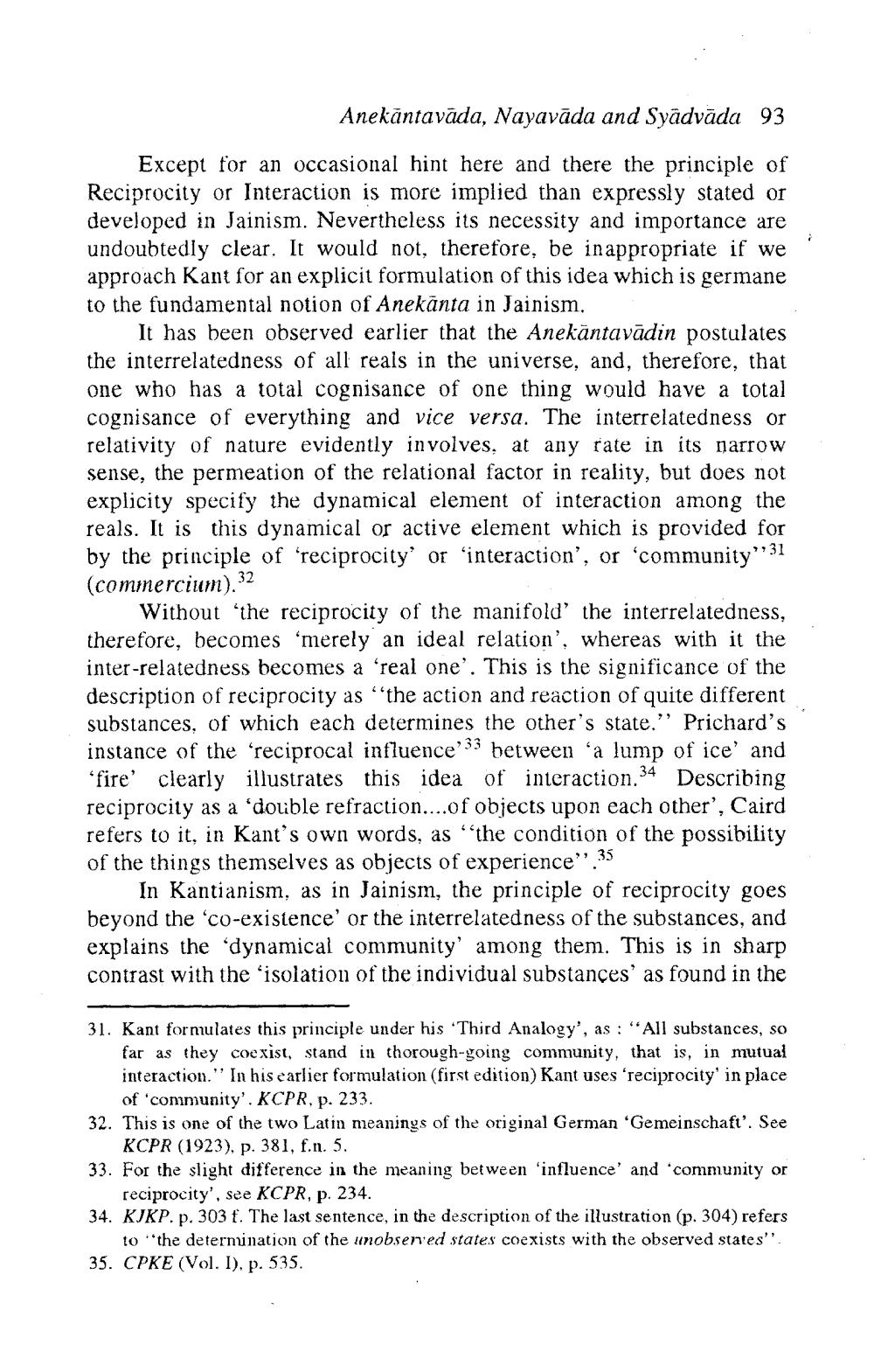________________
Anekāntavāda, Nayavāda and Syādvāda 93
Except for an occasional hint here and there the principle of Reciprocity or Interaction is more implied than expressly stated or developed in Jainism. Nevertheless its necessity and importance are undoubtedly clear. It would not, therefore, be inappropriate if we approach Kant for an explicit formulation of this idea which is germane to the fundamental notion of Anekānta in Jainism. .
It has been observed earlier that the Anekāntavādin postulates the interrelatedness of all reals in the universe, and, therefore, that one who has a total cognisance of one thing would have a total cognisance of everything and vice versa. The interrelatedness or relativity of nature evidently involves, at any rate in its narrow sense, the permeation of the relational factor in reality, but does not explicity specify the dynamical element of interaction among the reals. It is this dynamical or active element which is provided for by the principle of 'reciprocity' or 'interaction', or 'community”:31 (commercium).32
Without the reciprocity of the manifold' the interrelatedness, therefore, becomes 'merely an ideal relation', whereas with it the inter-relatedness becomes a real one'. This is the significance of the description of reciprocity as the action and reaction of quite different substances, of which each determines the other's state.” Prichard's instance of the reciprocal influence 33 between “a lump of ice and 'fire' clearly illustrates this idea of interaction.34 Describing reciprocity as a 'double refraction....of objects upon each other', Caird refers to it, in Kant's own words, as the condition of the possibility of the things themselves as objects of experience” 35
In Kantianism, as in Jainism, the principle of reciprocity goes beyond the 'co-existence' or the interrelatedness of the substances, and explains the dynamical community' among them. This is in sharp contrast with the 'isolation of the individual substances' as found in the
31. Kant formulates this principle under his 'Third Analogy', as : "All substances, so
far as they coexist, stand in thorough-going community, that is, in mutual interaction." In his earlier formulation (first edition) Kant uses 'reciprocity' in place
of 'community'. KCPR. P. 233. 32. This is one of the two Latin meanings of the original German 'Gemeinschaft'. See
KCPR (1923), p. 381, f.n. 5. 33. For the slight difference in the meaning between 'influence' and community or
reciprocity', see KCPR, p. 234. 34. KJKP. p. 303 t. The last sentence, in the description of the illustration (p. 304) refers
to the determination of the unobserved states coexists with the observed states". 35. CPKE (Vol. I), p. 535.




